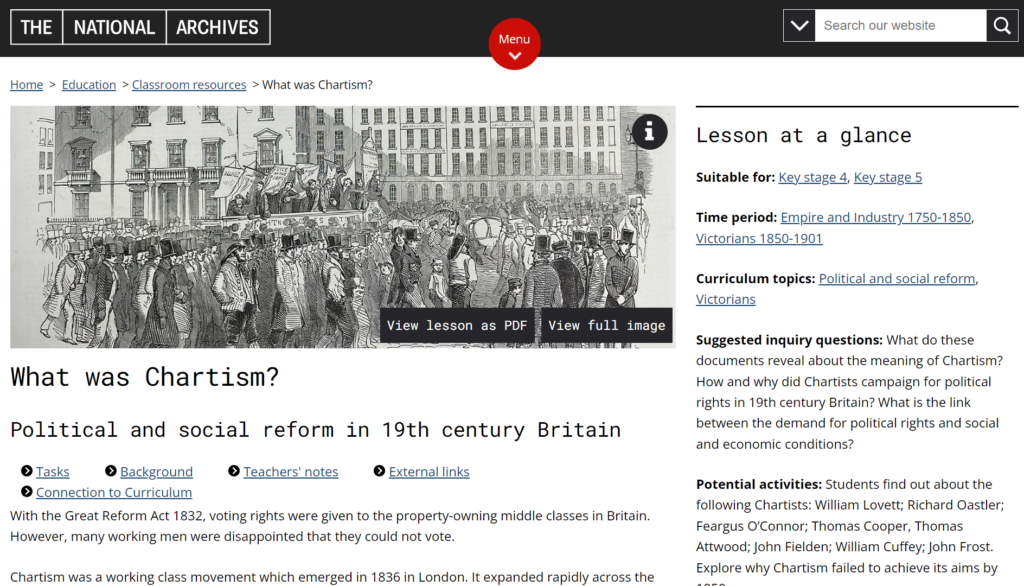Chartism
Category: History

Introduction
The Great Reform Act of 1832 only extended voting rights from 400,000 to 650,000. It gave the property-owning middle classes the right to vote in parliamentary elections but excluded the millions of the working class. The vicious measures of the Poor Law Amendment Act of 1834 and the criminalisation of trade unionists convinced many that the working class would not achieve justice until they had political rights and influence in parliament. Chartism was a working class movement that started in London in 1836 and spread rapidly across the country. Their petitions gained millions of signatures. The movement got its name from their People’s Charter which listed six main aims:
- a vote for all men (over 21)
- secret ballot
- no property qualification to become an MP
- payment for MPs
- electoral districts of equal size
- annual elections for Parliament
Chartism Video Playlist
This series of short videos from History Hub explains the development of Chartism and the events surrounding it. Click through the contents or next arrows to reveal subsequent videos.
Chartist Ancestors
An extensive collection of information, resources and artefacts relating to Chartism, including a database of all documented Chartists, compiled from records of the time. Click here.
What was Chartism?
The National Archives collection of documents related to Chartism along with lesson plans related to them. Click here.
Marxists Internet Archive: The Chartists
A collection of transcripts, scanned documents, text books, articles and letters relating to Chartism. Click here.
Further Learning
You may also be interested in our course on William Cuffay, the first black leader of a British political movement. Click here.
Feedback
Your views are very important to us, please click on the link below to let us know what you thought of this course.






